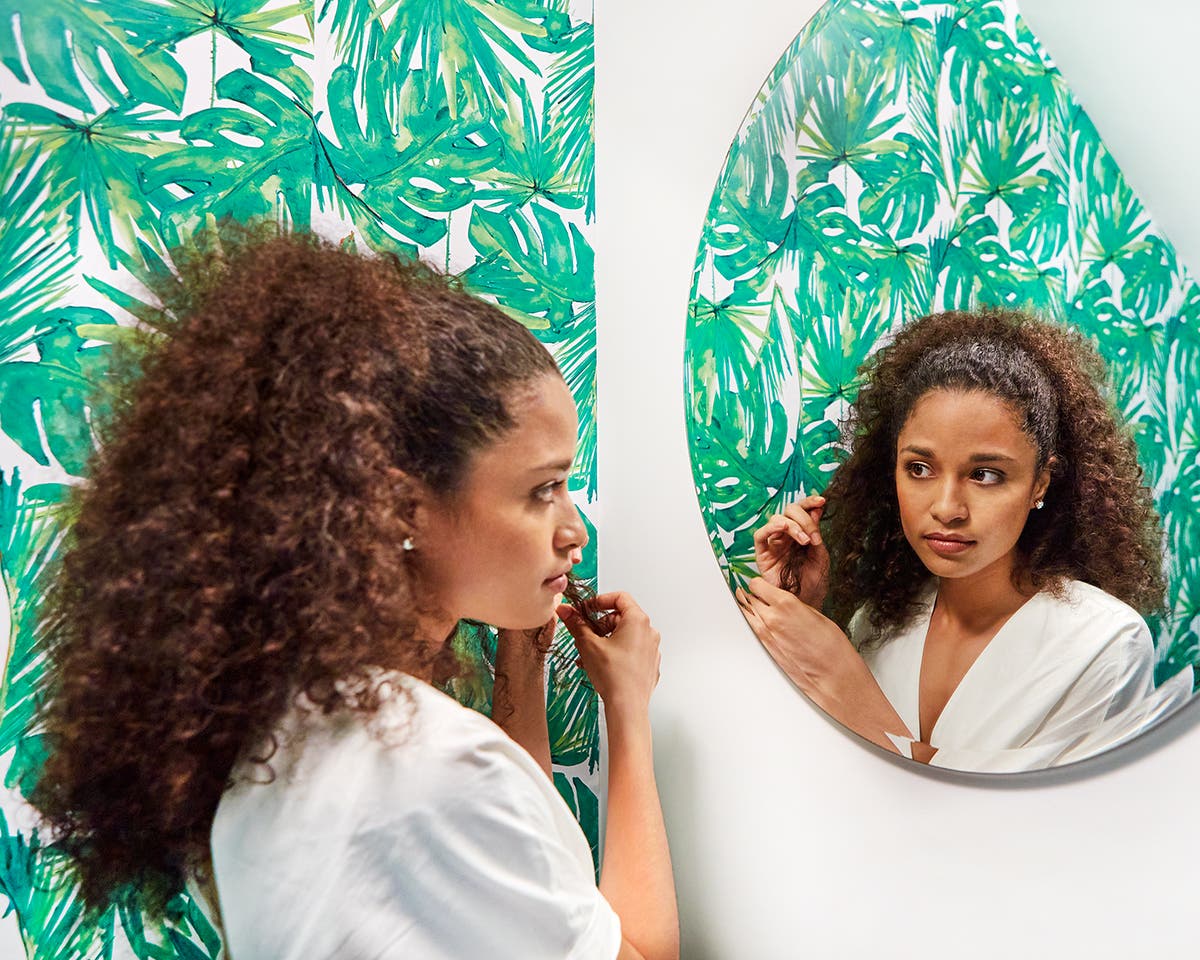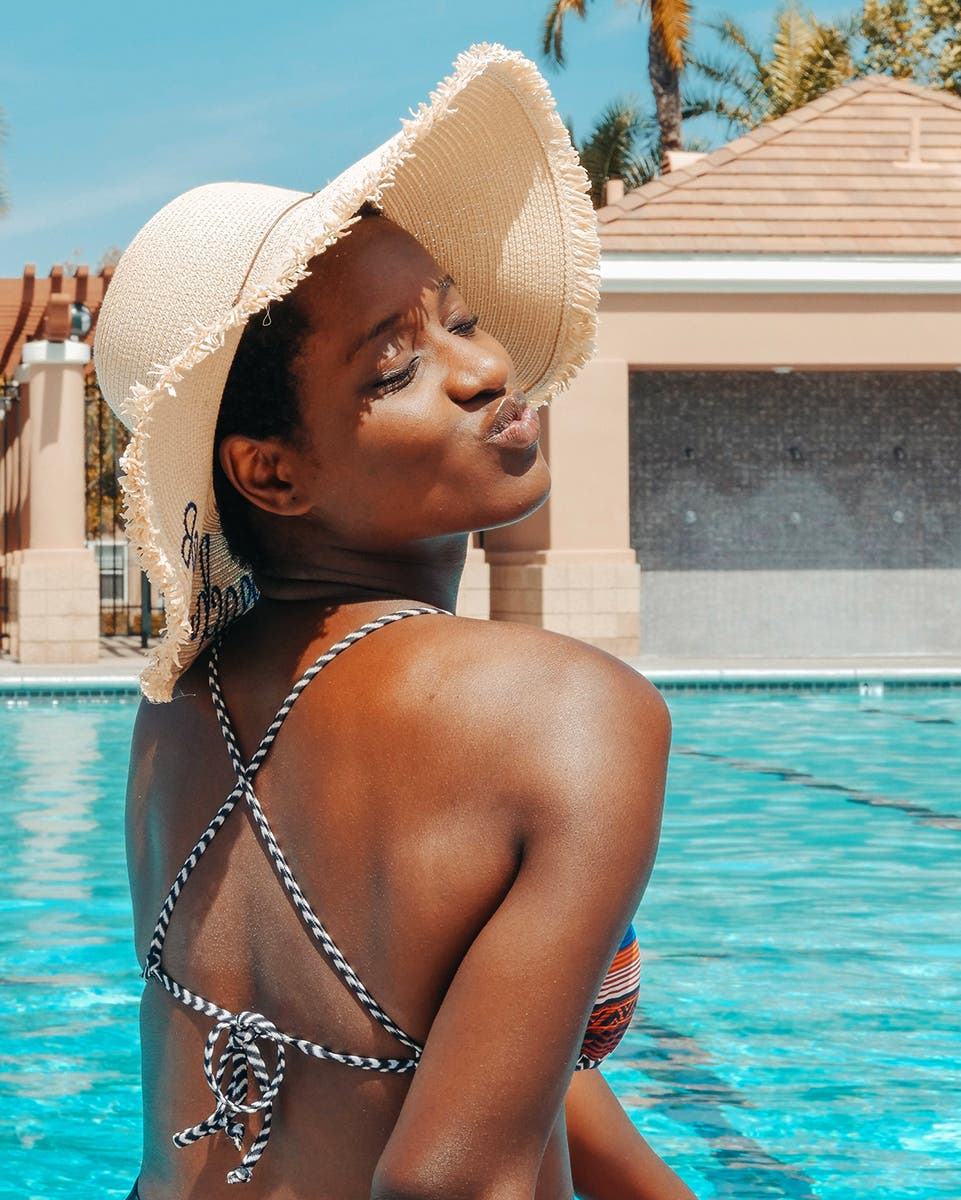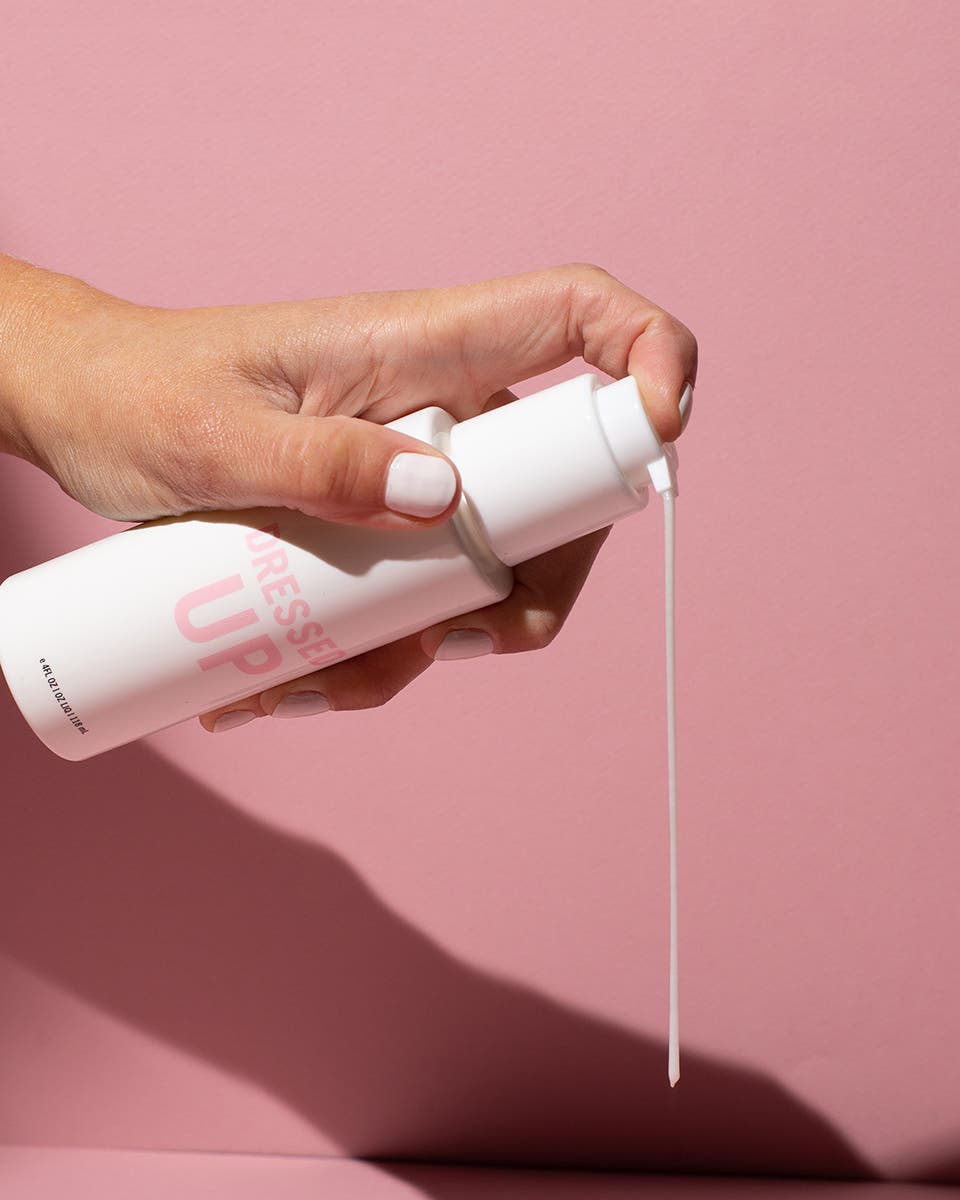Fun in the Sun: The 7 Best Ways to Prevent Hair Sun Damage

Before you step out into the summer sun, you lather up with sunscreen. But do you protect your hair from sun damage?
That’s right – just like the sun can wreak havoc on your skin, those rays can have a damaging effect on your hair. And if you don’t take preventative measures, you might find yourself with broken, split ends that need to be trimmed off sooner than you’d like.
If you want to maintain shiny, healthy strands while enjoying the sun this season, try these stylist-recommended tips on how to protect your hair from sun damage.
Does Sun Damage Hair?
Want the short answer? Yes, the sun damages hair.
But to help you understand why it has those effects — and how important it is to prevent hair sun damage — here are the details. UVA and UVB rays from the sun can damage your color and style in several different ways:
- Lipid damage: Prolonged sun exposure can break down your hair’s outer layer of lipids, which act as natural protection from environmental elements. This is one of the major causes of dry hair and frizzy strands, because without this layer, your hair isn’t able to retain moisture.
- Internal damage: The sun can also damage the internal structure of your hair, weakening it and making it prone to breakage and split ends.
- Color damage: If your hair is dyed, it’s even more susceptible to internal and external damage, since color treatments can leave your hair dehydrated and vulnerable. Dry hair tends to be more porous, which means dye is more easily washed out. Plus, UV rays act like bleach on your strands, breaking down color and making them fade or go brassy faster than usual.
Who’s Most at Risk for Hair Sun Damage?
Fine or light-colored hair is especially prone to UV damage, while thicker textures and darker shades offer more natural protection from the sun. But all hair types and colors are susceptible to some level of damage.
But what about where you live (or vacation)? Surprisingly, whether you’re outdoors in the suburbs or at the beach, you’re at similar risk for sun hair damage.
And keep in mind, between ozone depletion and the gradual intensification of the sun’s heat, the problem will only get worse over time. To keep your strands in optimal condition, it’s worth it to start learning how to prevent sun damage to hair now.

Signs of Sun Damaged Hair
If you’re out in the sun for long periods of time, you may start to notice changes to your color and style. Signs of hair damage from the sun include:
- Discoloration: A dramatic color change is a telltale sign that UV rays have reacted with the melanin in your hair.
- Change in texture: You may find your once-smooth hair is now dry, rough, and brittle and doesn’t swing freely like it used to.
- Split ends: As the sun penetrates your hair, your strands become more fragile and prone to breakage.
How to Protect Your Hair from Sun Damage
Just like you use SPF on a daily basis, there are several things you can do to protect your hair before heading out into the sun.

Add a Barrier
An easy way for how to protect hair from sun naturally is to use a physical barrier, like a scarf or hat. Be aware, however, that not all hats are created equal when it comes to hair sun protection. Hats rated with an ultraviolet protection factor (UPF) number are your best bet to minimize hair sun exposure, since they’re tested and regulated by the FDA. Otherwise, choose a tightly woven fabric over an open weave straw hat, which can let in harmful rays.
Minimize Peak Sunlight Exposure
To avoid getting sunburned, it’s best to steer clear of sun exposure during the hottest part of the day — and the same goes for protecting your hair. If you plan to be outside, aim for the morning or late afternoon. While you won’t totally escape the sun, you will avoid some of the harshest and most damaging rays.
Add SPF to Your Hair Care Routine
You already buy sunscreen for your skin, so consider adding an SPF product designed for your head to your routine. Whether you choose a spray or powder-based shield, there are plenty of options for protecting your hair.

Keep Your Scalp Healthy
To some extent, your hair protects your scalp from the sun — but not completely. And in fact, because your scalp isn’t used to getting much direct sunlight, it can be extra sensitive and fragile. Too much sun on your scalp can cause sunburn and dryness, which can then affect the roots of your hair. Make sure to apply SPF to your part and moisturize regularly (more on that later) to keep your scalp in optimal condition.
Avoid Chemicals
In the summer, the sun and the pool often go hand in hand, but chemicals like chlorine can weaken your hair, making it even more prone to sun damage. The same goes for the chemicals used in lightening treatments — they make your hair weak and vulnerable to the sun’s harsh rays. That doesn’t mean you have to give up a sun-kissed look for summer, but for maximum protection, it may be worth forgoing color treatments involving bleach.
Take a Break From Heat Styling
The sun is brutal enough on its own. Adding heat styling will only multiply the damage. While you don’t have to pack away your blow dryers and curling irons for good, using them less often during the summer can help keep your hair strong. To give your strands a break, a styling cream like Hair Balm can help you achieve a frizz-free, air-dried style.
Of course, you’ll still want a blown-out, straightened, or curled look every once in a while. So when you do pull out your hot tools, make sure to use a heat protectant, like Dressed Up, to guard against heat and UV light.

Make Extra Effort to Moisturize
One of the prominent signs of hair sun damage is dryness — so to protect hair from sun damage, you’ll want to have a solid moisturizing routine. But don’t just buy the biggest bottle of conditioner you can find. In fact, if you swap out your traditional shampoo for a soap-free alternative, you’ll find you don’t need a separate conditioner at all.
Here’s why: Conventional shampoo strips away the hair’s natural oils, and then a conditioner replaces that moisture. But you can avoid removing those oils in the first place — by using a soap-free cleanser, like New Wash — and keep your natural moisture and protective barrier. You can also add in extra hydration with a leave-in conditioner, like Hair Balm.
It Comes Down to Proper Protection
The sun is — and will continue to be — a problem for hair. But by learning how to protect your hair from sun damage, like washing with a soap-free cleanser, retaining your hair’s natural moisture, and being gentle to your scalp and strands, you can maintain a healthy head of hair without sacrificing fun in the sun.



